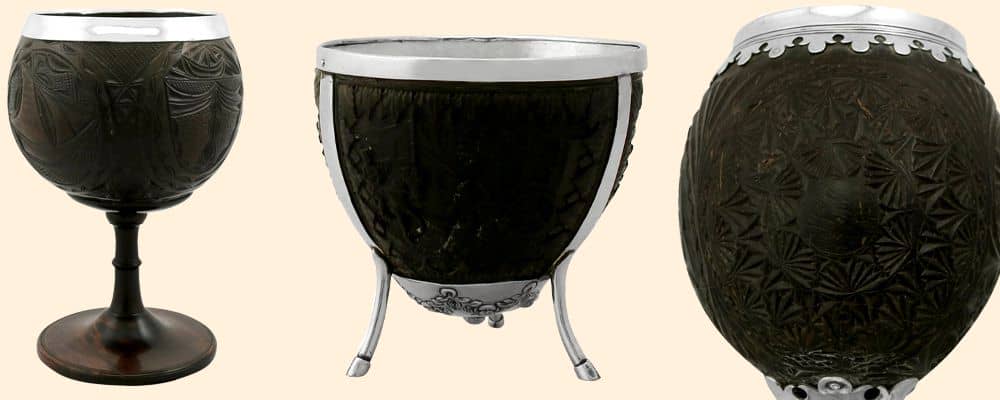Coconut Cups
Antique and Vintage Coconut Cups for Sale
AC Silver is proud to present a fine collection of coconut cups for sale; part of our antique drinking vessels collection.
Andrew Campbell selects only the finest vintage and antique silverware to add to the AC Silver inventory.
All of the vintage and antique coconut cups at AC Silver come with free and insured worldwide shipping and a 14 day return policy.
Browse our fine collection of vintage and antique coconut cups for sale at AC Silver.

Coconut Cups Frequently Asked Questions
The coconut cup was a Western European creation introduced in the 15th and 16th centuries as a type of standing cup. A standing cup is a tall cup in the style of a goblet that is frequently accompanied by a cover. During mediaeval times, the word 'hanap' was applied to these standing cups with covers, however this would only be for cups of some size and importance.
The standing cup has developed over time, seeming to have progressed from a simple combination of a wooden bowl with a cover, and gradually becoming the more extravagant cups often made with coconut or even ostrich egg, usually with a silver mount. Mounting coconut shells became a popular rarity during the Tudor period through to the end of the 18th century.
If standing cups were not made of gold, silver or silver-gilt, they were instead formed using material such as the egg of the ostrich or the shell of a cocoanut, or mottled wood that would be mounted on a foot and then surrounded by bands of precious metal. Although ostrich eggs and coconut shells would have been considered rare at that time, they were very popular. The two types of standing cup were classed together because their mounting was of the same character and they were a similar size and shape. Sometimes it was difficult to tell what the cup was trying to represent as some cups were made of silver or gilt silver and were in the shape of an egg or nut.
The usual design of an antique coconut cup was the trumpet-shaped base and the decoration would adhere to the taste of that particular period. In the Elizabethan times the surface of the nut was often elaborately carved with subjects or decoration in arabesque. An attractive contrast was produced to the silver or silver gilt, by the coconut shell being incised or polished. Coconut cups of the 15th century can be seen at Oriel and New Colleges in Oxford.









